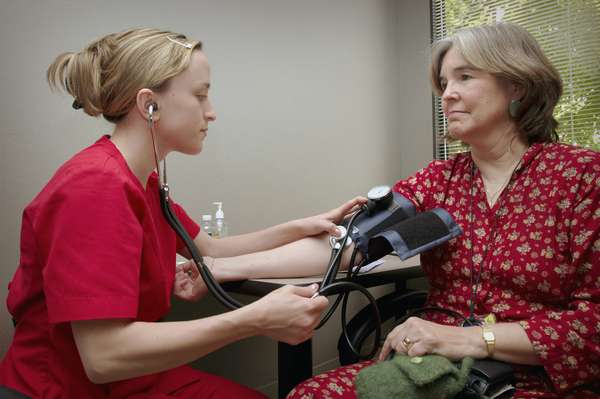
Canberra has the dubious honour of having Australia's lowest bulk billing rates—and for the territory's older residents, this healthcare postcode lottery has real consequences.
Now, the federal government's plan for three new bulk billing clinics might finally offer some relief, but questions remain about whether $10.5 million in seed funding will be enough to fix the problem.
The ACT's healthcare reality check
The numbers paint a stark picture. While New South Wales enjoys bulk billing rates of 82 per cent, the ACT languishes at just 53 per cent—making it the worst-performing jurisdiction in the country.
For context, South West Sydney boasts an 'always bulk billed' rate of 81 per cent, almost quadruple the ACT's rate of 23 per cent.
What does this mean for your wallet? Nationally, the average out-of-pocket cost for a non-bulk billed GP visit is $43, but this can range from $16 to $99 depending on where you live. For seniors on fixed incomes, these costs can quickly add up, especially when managing chronic conditions that require regular monitoring.
'We want more GPs. We don't want our hard-working GPs to be just shouldering an additional load'
How the seed funding model works
The $10.5 million represents a new approach to healthcare funding—offering one-off 'seed funding' to establish clinics rather than ongoing operational support. This differs from traditional Medicare funding, where the government pays rebates for each service provided.
Expressions of interest are being sought until October 8, with preference given to clinics spread across different geographic regions of the ACT.
The funding can go to either existing clinics wanting to expand bulk billing services or entirely new practices.
Why seniors are feeling the pinch
Australia's bulk billing rate fell from 88.8 per cent to 77.3 per cent between 2021-24, while patient out-of-pocket costs more than doubled from $780 million to $1.66 billion nationally.
Perhaps most concerningly, 8.8 per cent of Australians delayed or deferred GP care due to cost in 2023-24—a significant increase that particularly affects health outcomes for older adults.
There is some good news for seniors nationally. Bulk billing rates for older Australians with concession cards have increased to over 87 per cent following the government's decision to triple bulk billing incentives in November 2023. However, this national improvement hasn't translated to the ACT's unique situation.
The health cost reality for ACT seniors
ACT has lowest bulk billing rates in Australia (53 per cent)
Average out-of-pocket GP cost: $43 nationally
Nearly 9 per cent of Australians delay care due to cost
Seniors over 65 have 87 per cent bulk billing rate nationally (but not in ACT)
What experts are saying
Dr Kerrie Aust from the Australian Medical Association ACT remains cautiously optimistic but realistic about the challenges ahead. She points to a fundamental tension in modern healthcare: the push for bulk billing versus the desire for comprehensive, relationship-based care.
'Someone might come in with a cold and people might see that as easy medicine, but those are opportunities to check, 'How is the family going? What's happening with the child's eczema?'' she said. This 'slow medicine' approach—crucial for managing the complex health needs of older adults—can be harder to sustain under volume-driven bulk billing models.
Meanwhile, community advocates suggest the funding may not be sufficient. Recent research indicates the tripled bulk billing incentives may still be insufficient to reduce out-of-pocket costs, particularly in metropolitan areas where bonus payments are lowest.
The road to 90 per cent bulk billing
This ACT initiative sits within a broader government ambition to achieve 90 per cent bulk billing nationally by 2030. Government modelling suggests current reforms could increase GP bulk billing rates by around 10.5 per cent by 2028-29, potentially delivering 18 million additional bulk billed services per year.
What this means for Canberra seniors
- Three new bulk billing clinics planned across ACT regions
- $10.5 million in seed funding as one-off investment
- EOI process closes October 8, 2025
- Part of national push for 90 per cent bulk billing by 2030
- May not solve underlying GP shortage issues
Looking beyond bulk billing rates
The initiative also connects to other healthcare developments, including the upcoming Medicare urgent care clinic in Woden and existing nurse-led walk-in centres across the territory. These services aim to provide alternatives to emergency departments for non-urgent care.
However, as Dr Aust noted, there's a risk of healthcare fragmentation when the focus becomes purely about numbers rather than quality of care. For seniors managing multiple health conditions, having a regular GP who understands their complete health picture remains crucial.
What you can do while waiting
While the new clinics are being established, there are steps Canberra seniors can take:
- Ask your current GP about bulk billing options or payment plans
- Check if you're eligible for any concession cards that improve bulk billing access
- Consider the new Medicare urgent care clinic in Woden for non-urgent issues
- Use existing ACT walk-in centres for minor health concerns
- Plan ahead for routine appointments to avoid emergency department visits
Did you know?
Did you know?
The ACT's healthcare challenges aren't just about bulk billing—the territory also faces significant GP shortages, with many practices not accepting new patients. This 'postcode lottery' means where you live increasingly determines your healthcare access and costs.
What This Means For You
The success of these three new clinics will likely depend not just on funding, but on whether they can attract GPs willing to work in a bulk billing model while still providing the comprehensive care that seniors need and deserve.
Time will tell whether this seed funding approach proves more effective than previous attempts to address the ACT's healthcare access issues. For now, it represents hope for improvement in what has been Australia's most challenging healthcare market.
Have you struggled to find affordable GP care in Canberra? What would make the biggest difference to your healthcare access? Share your experiences in the comments below.
Original Article
https://www.abc.net.au/news/2025-09...w-bulk-billing-clinics-canberra-eoi/105800968
Medicare bulk billing and out-of-pocket costs of GP attendances over time, Patterns in GP bulk billing rates across states and territories—Australian Institute of Health and Welfare
Cited text: In 2023, the annual GP bulk billing rate for New South Wales was 82 per cent, compared with the lowest rates of 69 per cent in Tasmania and 53 per cent in the Australian Capi...
Excerpt: While New South Wales enjoys bulk billing rates of 82 per cent, the ACT languishes at just 53 per cent—making it the worst-performing jurisdiction in the country
https://www.aihw.gov.au/reports/med...rns-in-gp-bulk-billing-states-and-territories
Labor and the Coalition have pledged to raise GP bulk billing. Here’s what the Medicare boost means for patients
Cited text: Bulk billing rates are highest in poorer areas—South West Sydney has an “always” rate of 81 per cent, almost quadruple the rate in the ACT (23 per cent), which has ...
Excerpt: While New South Wales enjoys bulk billing rates of 82 per cent, the ACT languishes at just 53 per cent—making it the worst-performing jurisdiction in the country
https://theconversation.com/labor-a...-the-medicare-boost-means-for-patients-250604
Bulk‐billing rates and out‐of‐pocket costs for general practitioner services in Australia, 2022, by SA3 region: analysis of Medicare claims data | The Medical Journal of Australia
Cited text: Results: During 2022, 82 per cent (95 per cent confidence interval [CI], 80—83 per cent) of general practitioner services in Australia were bulk‐billed; the mean out‐of‐pocke...
Excerpt: Nationally, the average out-of-pocket cost for a non-bulk billed GP visit is $43, but this can range from $16 to $99 depending on where you live
https://www.mja.com.au/journal/2025...costs-general-practitioner-services-australia
Bulk Billing for all Australians | The Office of Impact Analysis
Cited text: After hitting a high-point during the COVID-19 pandemic due to the impacts of mandated requirements to bulk bill certain services, the bulk billing ra...
Excerpt: Australia's bulk billing rate fell from 88.8 per cent to 77.3 per cent between 2021-24, while patient out-of-pocket costs more than doubled from $780 million to $1.66 billion nationally
https://oia.pmc.gov.au/published-impact-analyses-and-reports/bulk-billing-all-australians
Bulk Billing for all Australians | The Office of Impact Analysis
Cited text: Over the same period, total patient out-of-pocket costs more than doubled (from $780 million to $1.66 billion), as has the proportion of people delayi...
Excerpt: Australia's bulk billing rate fell from 88.8 per cent to 77.3 per cent between 2021-24, while patient out-of-pocket costs more than doubled from $780 million to $1.66 billion nationally
https://oia.pmc.gov.au/published-impact-analyses-and-reports/bulk-billing-all-australians
UNOFFICIAL Bulk Billing for All Australians Impact Analysis—February 2025
Cited text: The Australian Bureau of Statistics’ Patient Experiences Survey has highlighted that 8.8 per cent of people in · 2023-24 deferred or delayed care due to cost....
Excerpt: 8.8 per cent of Australians delayed or deferred GP care due to cost in 2023-24
https://oia.pmc.gov.au/sites/default/files/posts/2025/02/Impact per cent20Analysis_0.pdf
UNOFFICIAL Bulk Billing for All Australians Impact Analysis—February 2025
Cited text: Since the · higher-value bulk billing incentive items were introduced, the overall GP bulk billing rate has stabilised · at 77.5 per cent (December 2024), Fig...
Excerpt: Bulk billing rates for older Australians with concession cards have increased to over 87 per cent following the government's decision to triple bulk billing incentives in November 2023
https://oia.pmc.gov.au/sites/default/files/posts/2025/02/Impact per cent20Analysis_0.pdf
The impact of differences in bulk‐billing rates: strategies for greater equity in Medicare | The Medical Journal of Australia
Cited text: It increased the bulk‐billing incentives for general practitioners in rural and remote areas in January 2022, and subsequently tripled them in Novembe...
Excerpt: Recent research indicates the tripled bulk billing incentives may still be insufficient to reduce out-of-pocket costs, particularly in metropolitan areas where bonus payments are lowest
https://www.mja.com.au/journal/2025...ling-rates-strategies-greater-equity-medicare
Bulk Billing for all Australians | The Office of Impact Analysis
Cited text: The IA estimates Option 2 would increase the GP bulk billing rate by around 10.5 per cent by 2028-29. These two changes would see 18 million additional servic...
Excerpt: Government modelling suggests current reforms could increase GP bulk billing rates by around 10.5 per cent by 2028-29, potentially delivering 18 million additional bulk billed services per year
https://oia.pmc.gov.au/published-impact-analyses-and-reports/bulk-billing-all-australians







